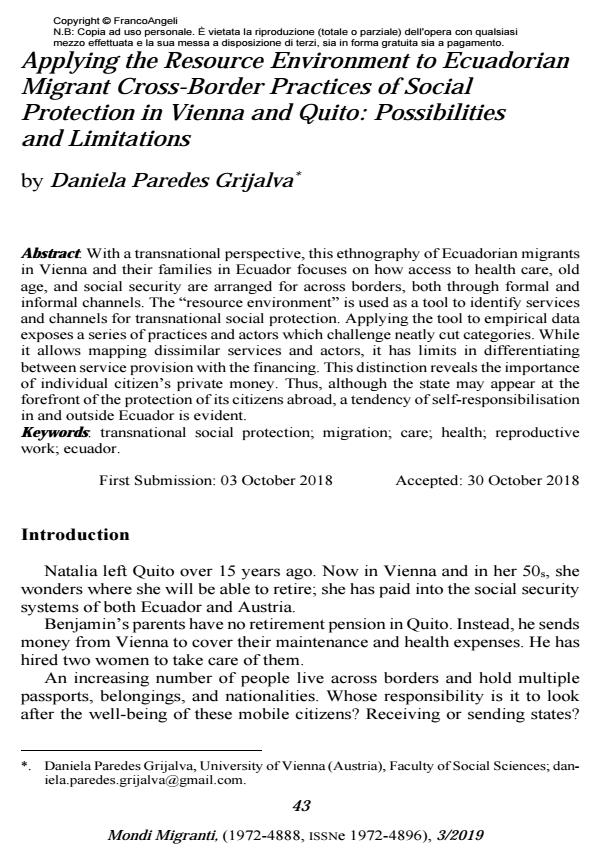Applying the Resource Environment to Ecuadorian Migrant Cross-Border Practices of Social Protection in Vienna and Quito: Possibilities and Limitations
Titolo Rivista MONDI MIGRANTI
Autori/Curatori Daniela Paredes Grijalva
Anno di pubblicazione 2019 Fascicolo 2019/3
Lingua Inglese Numero pagine 20 P. 43-62 Dimensione file 205 KB
DOI 10.3280/MM2019-003003
Il DOI è il codice a barre della proprietà intellettuale: per saperne di più
clicca qui
Qui sotto puoi vedere in anteprima la prima pagina di questo articolo.
Se questo articolo ti interessa, lo puoi acquistare (e scaricare in formato pdf) seguendo le facili indicazioni per acquistare il download credit. Acquista Download Credits per scaricare questo Articolo in formato PDF

FrancoAngeli è membro della Publishers International Linking Association, Inc (PILA)associazione indipendente e non profit per facilitare (attraverso i servizi tecnologici implementati da CrossRef.org) l’accesso degli studiosi ai contenuti digitali nelle pubblicazioni professionali e scientifiche
With a transnational perspective, this ethnography of Ecuadorian migrants in Vi-enna and their families in Ecuador focuses on how access to health care, old age, and social security are arranged for across borders, both through formal and informal channels. The "resource environment" is used as a tool to identify services and channels for transnational social protection. Applying the tool to empirical data exposes a series of practices and actors which challenge neatly cut categories. While it allows mapping dissimilar services and actors, it has limits in differentiat-ing between service provision with the financing. This distinction reveals the im-portance of individual citizen’s private money. Thus, although the state may ap-pear at the forefront of the protection of its citizens abroad, a tendency of self-responsibilisation in and outside Ecuador is evident.
Parole chiave:Transnational social protection; migration; care; health; reproductive work; ecuador.
Daniela Paredes Grijalva, Applying the Resource Environment to Ecuadorian Migrant Cross-Border Practices of Social Protection in Vienna and Quito: Possibilities and Limitations in "MONDI MIGRANTI" 3/2019, pp 43-62, DOI: 10.3280/MM2019-003003